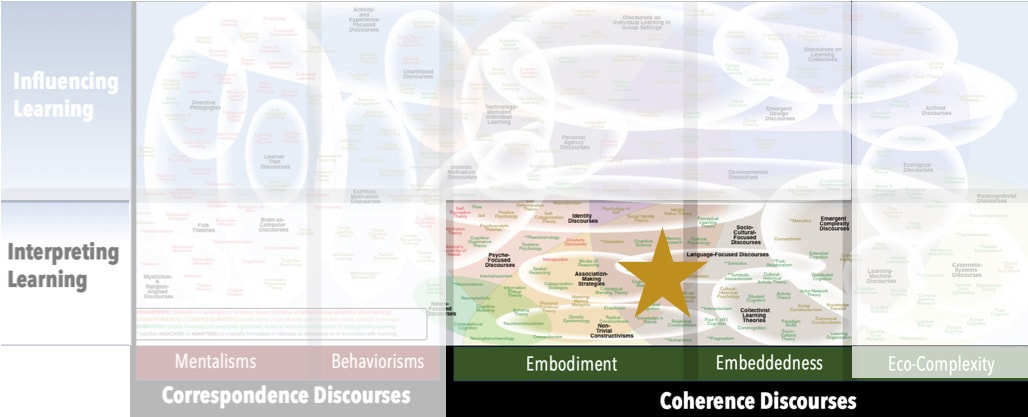Focus
How group identifications contribute to self-definitionPrincipal Metaphors
- Knowledge is … scope of possible identifications
- Knowing is … identifying with others
- Learner is … a social agent
- Learning is … establishing new identifications
- Teaching is … N/A
Originated
1970sSynopsis
Self-Categorization Theory looks across the categories one uses to identify oneself – for example, as an individual, as a partner, as a member of a social group, and a member of a party, as a human, and so on. The theory attempts to answer the matters of when/why is a collection of people perceived as a collective, along with the consequences of that sort of perception. It asserts that one adopts beliefs and behaviors of one’s ingroup, and one distances oneself from outgroups – meaning that one’s beliefs and behaviors change with one’s immediate group identifications. A tenet of the theory is that one’s sense of self is a product of cognition, not the other way around.Commentary
At the time the theory was proposed, several of Self-Categorization Theory’s grounding principles were radical and disruptive. For example, the suggestion that the self was a product of cognition and social interaction (and not the other way around) represented a complete rejection of some foundational tenets of the still-dominant Correspondence Discourses. Unfortunately, its authors uncritically embraced Cognitivism, which limited the theory’s reach.Authors and/or Prominent Influences
John TurnerStatus as a Theory of Learning
Self-Categorization Theory is principally a theory of identity, but it can also be understood as a theory of learning – one that is specifically focused on the role of group identifications in channeling and framing one’s learning.Status as a Theory of Teaching
Self-Categorization Theory is not a theory of teaching.Status as a Scientific Theory
Many of Self-Categorization Theory’s tenets and assertions have proven to be justified. For the most part, however, those tenets have been assumed by or subsumed within other theories that don’t carry the baggage from theories of learning that were prominent in 1970s.Map Location

Please cite this article as:
Davis, B., & Francis, K. (2019). “Self-Categorization Theory” in Discourses on Learning in Education. https://learningdiscourses.com.
⇦ Back to Map
⇦ Back to List
